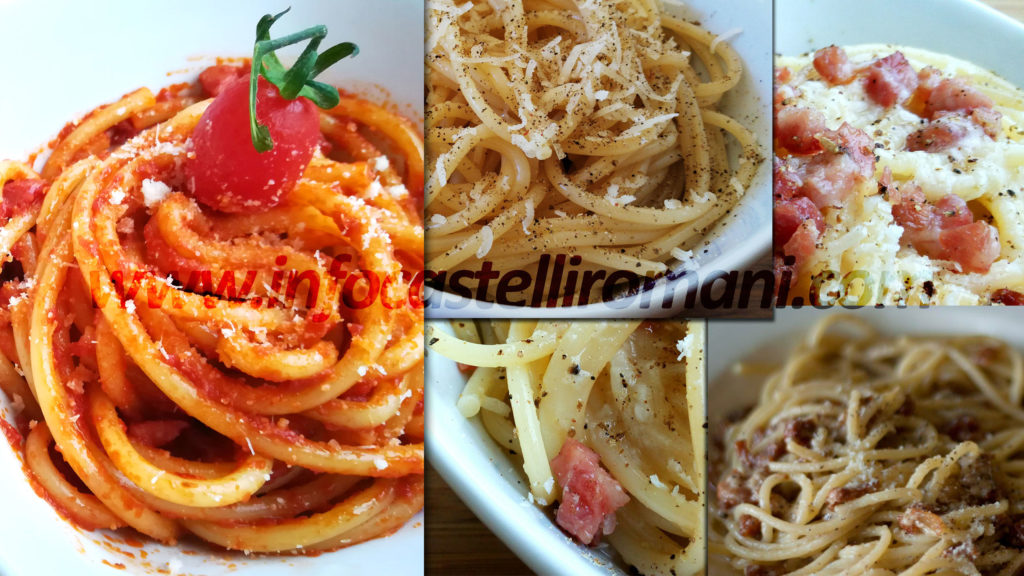
We are going to introduce you to this famous, tasty, rich, inimitable, quartet of Roman cuisine first courses: Carbonara, Cacio e Pepe, Amatriciana, Gricia. Dishes of poor and popular origins, those are today re-evaluated among the excellence of Italian cuisine, and re-proposed by great internationally renowned chefs such as Alessandro Borghese.
Cacio e pepe.
Cacio e pepe, literally “(pasta) with cheese and wine”, is perhaps one of the most famous recipe of the roman tradition. This simple and peasant dish, may seem easy to make (but it’s not) for the shortness of its ingredients list: pasta, pepper, and pecorino romano cheese.
Carbonara (bacon and egg pasta).
The carbonara is perhaps the most nutritious, and the most tasty, of the four famous pasta dishes of the Roman area. Its simple recipe, with “guanciale”(a regional pork meat, similar to bacon but really fat and tasty) sautéed in its own fat, egg, salt, pecorino romano and pepper, has is admitted alternative made with the bacon (pancetta) variant.
This could take to a possible genesis of carbonara, in the ration of the American soldiers landed during the Second World War, which, was composed of freeze-dried egg and bacon.
The famous pasta dish, would be born from the encounter with Italian products, pasta and pecorino, and the hunger of people in that dramatic period. Other hypotheses see its genesis in the Neapolitan region and history, while another more romantic legend, would see the recipe born in the secret of “Carboneria”(italian masonry), hence the name carbonara, and the need to prepare a quick and nutritious dish, in difficult conditions.
Amatriciana and Gricia.
Amatriciana (or “matriciana”, in roman dialect) is named after Amatrice, a little town in the province of Rieti, where it was born. Its main ingredients are tomato sauce, “guanciale”, and pecorino romano cheese. Over the years it’s fame has grown thanks to reality and food shows, it actually owes its origin to the less famous, Gricia, or the “white” amatriciana, a really loved dish of the Lazio area.
Gricia, according to one of the most famous reconstructions, would see its origins in the same area of ??Rieti, more exactly in the small town of Grisciano (hence the name of the dish Gricia).
